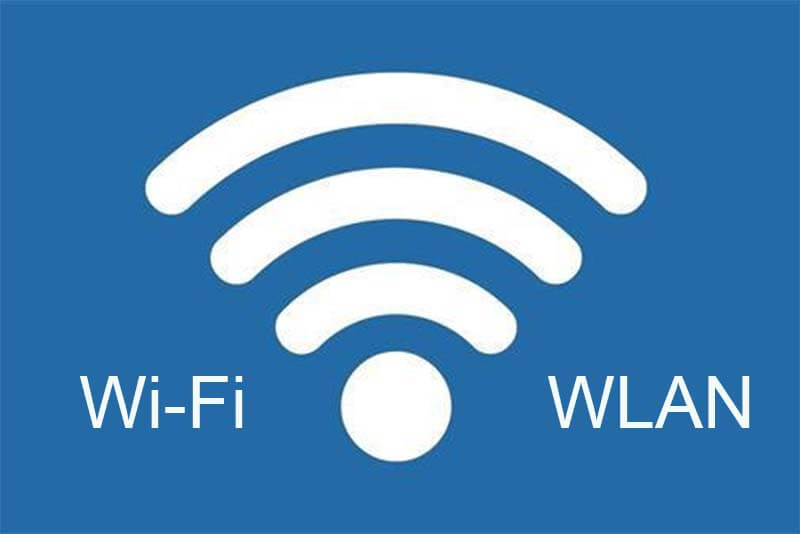
After the read, you will learn about:
What is Wifi?
What is WLAN?
What is the difference between WIFI and WLAN?
What is WLAN?
WLAN wireless Internet access, its full name is Wireless Local Area Networks, Chinese interpretation is wireless local area network, is a system that uses radiofrequency (Radio Frequency RF) technology for data transmission.
The emergence of this technology is by no means used to replace wired local area networks, but to make up for the shortcomings of wired local area networks to achieve the purpose of network extension, so that wireless local area networks can use a simple access structure to allow users to achieve wireless Network cable, unobstructed network without distance limitation.
WLAN uses the ISM (Industrial, Scientific, Medical) radio broadcast frequency band for communication. The 802.11a standard of WLAN uses the 5 GHz frequency band and supports a maximum speed of 54 Mbps, while the 802.11b and 802.11g standards use the 2.4 GHz frequency band and support maximum speeds of 11 Mbps and 54 Mbps, respectively.
The current protocol standards included in the WLAN include IEEE802.11b, IEEE802.11a, IEEE802.11g, IEEE802.11E, IEEE802.11i, and Wireless Application Protocol (WAP).
What is Wi-Fi?
WIFI (Wireless Fidelity) technology is a brand of wireless network communication technology based on the IEEE 802.11 series of standards. The purpose is to improve the interoperability between wireless network products based on the IEEE 802.11 standard Alliance).
WIFI is a wireless networking technology. In the past, computers were connected through the network, but now they are connected through radio waves. The Wi-Fi Alliance (also known as WECA, the organization for the standardization of wireless local area networks) was established in 1999. The name at the time was Wireless Ethernet Compatibility Alliance (WECA). In October 2002, it was officially renamed the Wi-Fi Alliance.
Like Bluetooth technology, it belongs to short-range wireless technology used in offices and homes. This technology uses a frequency band near 2.4GHz, which is currently an unlicensed wireless frequency band. There are two currently available standards, namely IEEE802.11a and IEEE802.11b.
In the case of weak signal or interference, the bandwidth can be adjusted to 5.5Mbps, 2Mbps, and 1Mbps. The automatic adjustment of the bandwidth effectively guarantees the stability and reliability of the network. This technology is favored by manufacturers due to its own advantages.
1. The difference between WIFI and WLAN, WIFI is included in WLAN, the power of the transmitted signal is different, and the coverage is different.
In fact, WIFI is a trademark of WLANA (Wireless Local Area Network Alliance). The trademark only guarantees that goods using the trademark can cooperate with each other, and it has nothing to do with the standard itself. However, because WIFI mainly uses the 802.11b protocol, people are getting used to it. Use WIFI to call the 802.11b protocol.
In terms of inclusion relationship, WIFI is a standard of WLAN. WIFI is included in WLAN, which is a new technology that adopts the WLAN protocol. The coverage of WiFi can reach about 300 feet (about 90 meters), and the maximum WLAN (with antenna) can reach 5KM.
2. The difference between WIFI and WLAN, the wireless signal range covered is different.
WIFI (Wireless Fidelity), also known as the 802.11b standard, its biggest advantage is its high transmission speed, which can reach 11Mbps, and its effective distance is also very long, and it is also compatible with various existing 802.11DSSS devices.
Wireless Internet has become a reality.
The radio wave coverage is wide. The radio wave coverage based on Bluetooth technology is very small. The radius is only about 50 feet or 15 meters, while the radius of Wi-Fi can reach about 300 feet or 90 meters. Needless to say, the office. It can also be used in the entire building. However, with the development of wifi technology, wifi signals will cover a wider range in the future.
Besides the What is the difference between WIFI and WLAN article, you may also be interested in the below articles.
Summary of 41 Basic Knowledge of LTE
What Is The 5G Network Slicing?

One Response